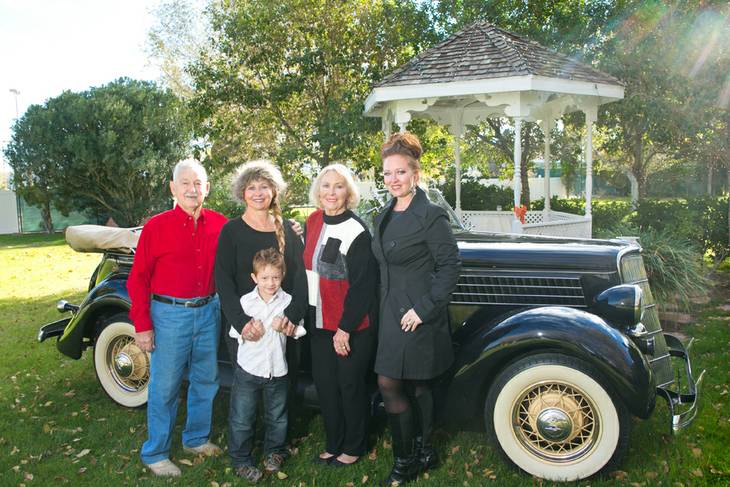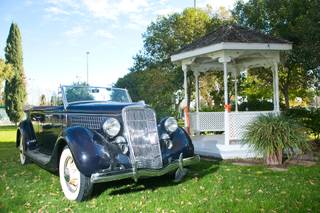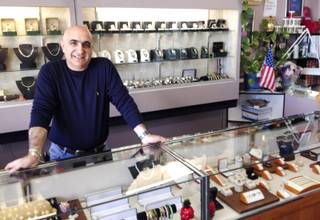Starting a company is hard.
As many as 85 percent of businesses fail during their first year in operation. Even after 10 years running, companies can fold at the drop of a hat due to a dwindling customer base, shaky business plan or overambitious expansion.
In the wake of the recession, finding a winning formula has been even more difficult for entrepreneurs.
But companies across the valley are making it.
Some have been around for decades. Others formed — and thrived — just as the economy began to crash.
How’d they do it? Here’s a look at seven companies and the secrets of their success:
-
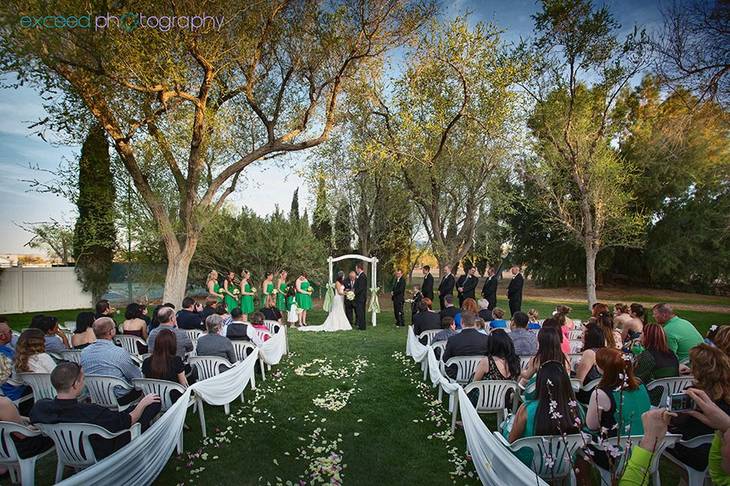
Las Vegas Racquet Club, 50 years
John and Ann Miller’s tennis club was the place to be in old Las Vegas.
Movie stars, casino owners, judges and politicians frequented the Las Vegas Racquet Club, founded 50 years ago as a desert retreat. Celebrities drank, lounged about and hid from the press while showgirls played tennis topless. In the ’70s, John Miller gave a tennis lesson to a porn star in front of 15 to 20 onlookers, most of them men.
“She had on tennis shoes,” Miller said. “That’s it.”
But by the ’80s, membership seemed poised to fall. Racquetball was one of the fastest-growing sports in America, local casinos were building tennis courts at warp speed, and gated communities sprouted up around town with tennis facilities on site.
So the Millers decided to change course. They had watched President Richard Nixon’s daughter Tricia get married in the White House Rose Garden a decade earlier and figured they could run weddings, too.
In 1983, they ditched tennis and turned their club into a marriage venue.
Today, the Secret Garden sits on a 10-acre spread on Dean Martin Drive near the South Point. Run by the Millers’ granddaughter, Erin Mills, a former casino host, the venue holds an average of 30 to 50 weddings a year. About half of the Millers’ clients are from outside Nevada, with most weddings hosting 75 to 100 guests.
The cost of a deluxe package, known as the Diamond, starts at $13,475 and includes wine and Champagne before the ceremony, a buffet dinner, a chocolate fountain, a classic car ride to the ceremony for the groom, and a horse and carriage for the bride.
The business is a family affair, with five generations helping out over the years. John’s dad and Ann’s parents pitched in decades ago, as do Erin’s children, who are 5 and 13 years old.
And reminders of the old sports club, which the Millers built from scratch, are everywhere. Former tennis courts serve as parking lots. The pool is shaped like a tennis racquet. The pro shop is now a bridal lounge, and old locker rooms are formal changing rooms.
-
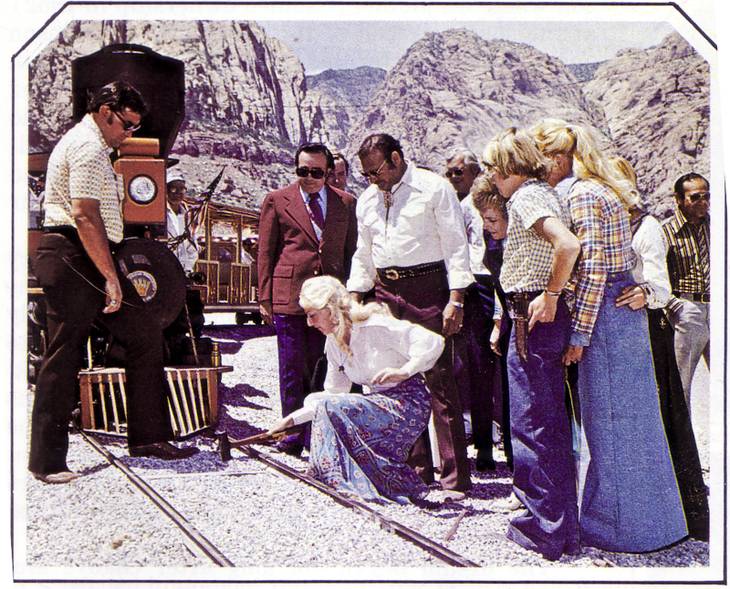
Red Rock Riding Stables, 50 years
Alan Levinson is a real-life cowboy.
He and his sister, April Hopper, own and operate Red Rock Riding Stables at Bonnie Springs Ranch, 10 minutes west of Las Vegas in the Red Rock Canyon conservation area. The stable celebrated its 50th birthday this year.
“It has been a lot of hard work and dedication to our customers,” Events Manager Karin Marie Bell said. “The customer experience is the most important aspect of our success. We try to create a fun, working environment and a wonderful guest experience.”
In addition to the stables, the siblings own and operate “Old Nevada,” a re-creation of an 1880s mining town that features gunfights, a motel, shops, a museum and a shooting gallery. A petting zoo, restaurant, bar and wedding chapel also are on site.
Their parents, Al and Bonnie Levinson, started the Western empire close to 60 years ago. The bar and restaurant came first, followed by the horse stables. Old Town opened in 1974 and the 50-room motel in 1989.
Al Levinson died in 1994, but 92-year-old Bonnie still enjoys the ranch. Levinson and Hopper took over day-to-day operations after their father’s death.
“We were all running it as a family when my dad was alive,” Alan Levinson said.
“Our employees are what make us such a warm and cozy place to visit,” Bell said. “We appreciate our staff, and they are truly family to us.”
Bonnie Springs Ranch was built in 1843 as a stopover for wagon trains going to California via the Old Spanish Trail.
Today, the stables offer pony and horseback riding packages, as well as stall rentals.
-
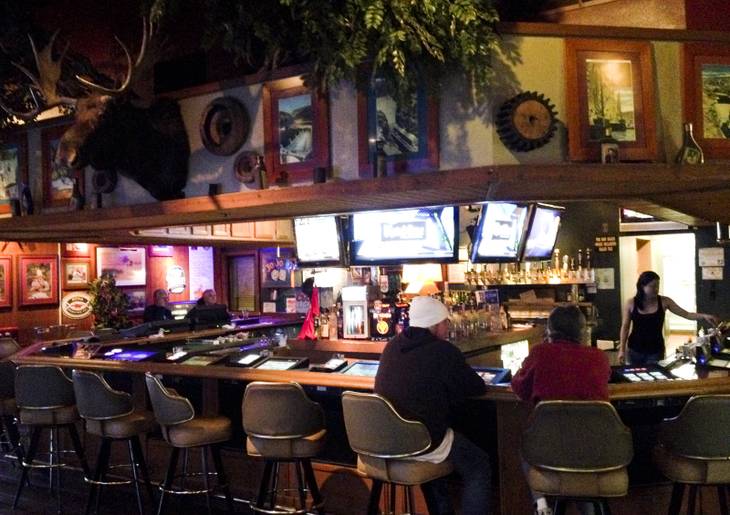
Magoo’s Bar and Grill, 25 years
When Terry Caudill opened a small watering hole on West Tropicana Avenue and South Jones Boulevard 25 years ago, he didn’t realize it would set the stage for a chain of neighborhood taverns and a pair of downtown casinos.
Caudill — founder, president and CEO of TLC Casinos — opened Magoo’s Bar and Grill in 1988 with the mantra of “friendliness and cleanliness.” When he opened a second location at East Flamingo Road and South Eastern Avenue, the original became Magoo’s West and the new location Magoo’s East.
The first two properties were relatively simple projects. Caudill remodeled existing buildings with a simple design.
But his next project was to build a Magoo’s from the ground up. He wanted to design his own vision of the perfect place to relax, have a few drinks, watch sports and eat a good meal.
“When you see a place like this, you can see that Terry took the neighborhood bar concept to another level,” said Nick Hubber, director of operations for Magoo’s gaming group.
The Magoo’s at West Cheyenne Avenue and North Tenaya Way, built in 1996, has a U-shaped bar with slot machines, big screen televisions and a separate dining area. A fireplace and moose head above the bar create a frontier atmosphere.
“Terry’s goal was to transform this from a small neighborhood bar with neon beer signs to a comfortable neighborhood casino,” Hubber said. “He wanted to offer a place where you could get good food and gamble without having to travel to the Strip.”
Hubber said advancements in slot machine technology also helped Magoo’s grow.
Caudill soon acquired the Loose Caboose chain of taverns and the Golden West Restaurant and Casino in Mesquite. Thirteen years ago, when beer pubs became popular, he built Chicago Brewing Co., a non-gaming restaurant and bar. He now owns 12 neighborhood taverns under several brands.
In 2003, he expanded to casinos. Caudill acquired the 690-room Four Queens downtown, followed by Binion’s. Caudill closed the Binion’s hotel in 2009, but the casino remains open.
-
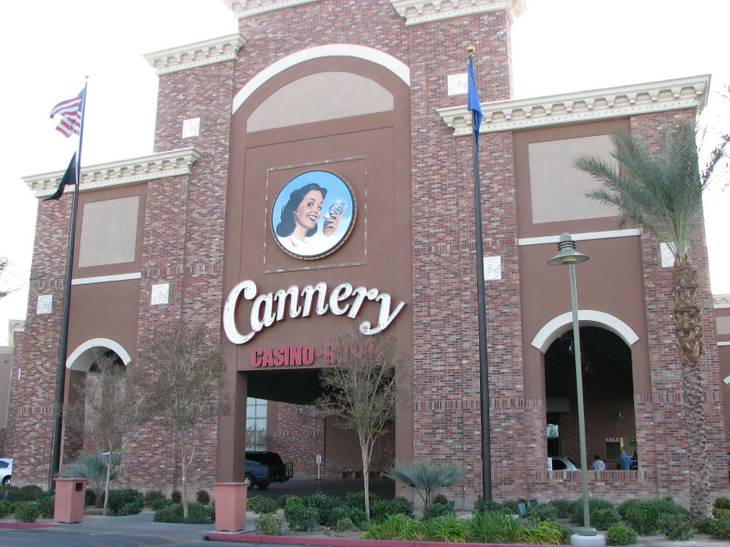
The Cannery, 10 years
The Cannery has played a key role in the struggling economy of North Las Vegas. In its 10-year history, it has served as one of the city’s must-see destinations and a valuable contributor to the community.
Patrick Hughes, general manager of the family-owned resort, credits the company’s survival to its unwavering commitment to a single principle: providing quality entertainment at affordable prices.
Not only has the casino thrived, Cannery Casino Resorts has doubled its presence in Nevada and expanded to Pennsylvania over the past decade.
Beyond prices, Hughes pointed to the resort’s friendliness as a sticking point for tourists.
“Our guests continue to enjoy the ‘home away from home’ atmosphere that our staff creates, and we have made it a point to allow our staff to be themselves while at work,” Hughes said. They “continue to build personal relationships with their guests, which is unique in today’s corporate casino climate.”
Outside day-to-day casino operations, the Cannery aims to make a positive impact on the community, Hughes said. The resort offered free rooms to people displaced by forest fires on Mount Charleston and aims to revive Nellis Appreciation Day.
“Aside from the fact that our business is reliant upon the community, we truly care about the development and growth of our staff and customers,” Hughes said. “We are currently working with Mayor John Lee to put North Las Vegas on the map of economical development by making this an attractive city to entice new business and increase home ownership,” Hughes said.
As for the future?
Hughes said the company plans to improve the resort by adding more entertainment. The Cannery already rolled out a new 16-theater Galaxy Cineplex, a high-end movie theater with competitive ticket prices.
-

Slater Hanifan Group, 10 years
Ken Hanifan and Jerry Slater opened their civil engineering consulting firm at just the right time.
It was 2003. Las Vegas had been growing fast for years but was embarking on a frenzied building boom, with housing tracts, office buildings and strip malls popping up on a seemingly daily basis.
In just a few years, Slater Hanifan grew to 50 employees.
But business was so robust, the firm had to turn down millions of dollars in projects because it didn’t have the staff to complete them.
Desperate for employees, Hanifan and Slater got creative. They opened an office in the Philippines, which allowed them to outsource work so they could handle more business back home.
Then the housing market crashed, and Hanifan and Slater faced new challenges.
They shut down their Philippines office in 2008 and laid off dozens of people in Las Vegas. By 2009, they were down to 16 workers.
But they still weren’t willing to give up. To stay afloat, Slater Hanifan, like many other construction companies, pushed heavily into government contracting, a steady source of work. They expanded their expertise to include flood control, site planning and transportation work.
The firm also began offering construction management services, such as invoice reviews, contract bidding and dust-control monitoring.
The strategy paid off. Hanifan and Slater now have about 80 employees and are looking for more.
“We’re still trying to hire,” Hanifan said.
-
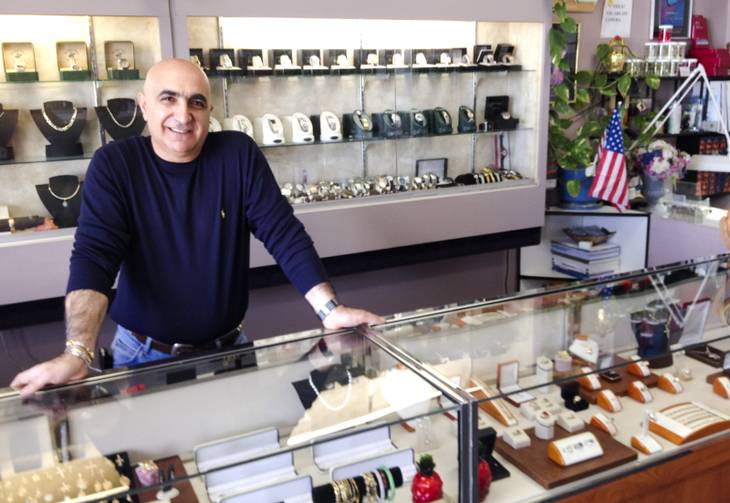
Alex’s Shoe and Jewelry Repair, 10 years
Alex Kassarjian is the first to admit that his store in southwest Las Vegas offers an unorthodox combination of services.
Located in a small suite in the Parkview Plaza strip mall, Alex’s Shoe and Jewelry Repair devotes half of its space to leather work – repairs, alterations, and shining for shoes, cowboy boots, handbags and belts — and the other half to jewelry work, including ring sizing, watch repairs and battery replacements.
The secret to Kassarjian’s two-sided business is a division of labor. He focuses on the jewelry while his business partner takes care of the shoes.
For several years, Kassarjian owned a jewelry store on East Tropicana Avenue that had a loyal following thanks to word-of-mouth endorsements. But when the rent spiked two years ago, he decided to move.
He found Joel Millan, a leather repairman, who faced a similar dilemma. They agreed to join forces and split a store and its expenses down the middle.
Kassarjian’s experience working at Tiffany and Co. in New York taught him a lesson that he made the cornerstone of his business: Customers don’t like to part with their watches, rings, necklaces and bracelets, even for a few minutes. So he emphasizes quick repairs while customers wait.
“I think that’s why a lot of my customers come to me,” Kassarjian said. “I’ll explain how long it’s going to take, and I work quickly on most repairs. I can take care of the problem while they’re in the store.”
-
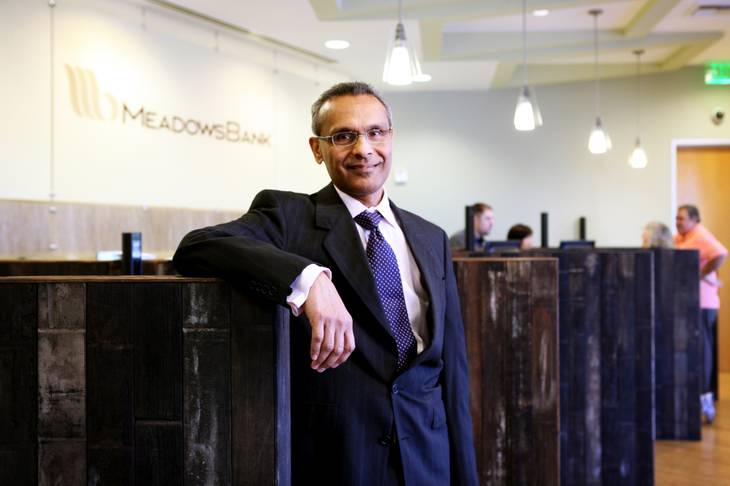
Meadows Bank, 5 years
Scores of Las Vegas executives overhauled their business plans to stay afloat during and after the recession. Banker Arvind Menon did it before opening his doors.
Menon and several partners started tossing around the idea of opening Meadows Bank in 2007 when the economy was roaring. They lined up $40 million in capital, filed an application with federal regulators and figured they’d grow Meadows to $500 million in assets in five or six years.
“Things looked pretty rosy at the time,” said Menon, Meadows’ president and CEO.
But a year later, the housing bubble had burst, Las Vegas’ economy was in ruins and banks were failing nationwide. Regulators, hesitant to approve any new banks, thought Menon’s growth plans were too optimistic.
He had to scale back. So Menon eased his projections.
He got approval and opened Meadows Bank in March 2008.
Five years later, the bank, which finances real estate deals and general business expenses, is thriving. It has $330 million in assets and is widely viewed as the strongest local lender in the valley. It consistently churns out profits.
Meadows Bank was the only Las Vegas-based bank to earn a profit in 2010 and was one of only two local banks to profit in 2011. Last year, Meadows and three other local banks realized profits.
Besides following a slower growth plan, Menon has taken other steps to keep business humming.
If a client wants to buy an office building, for instance, Meadows makes sure the property has a solid tenant base that will stay put and pay rent for a good amount of time. Bankers also obtain loan guarantees to help ensure repayment if a borrower defaults.
